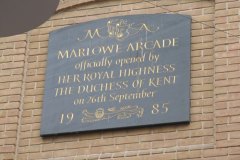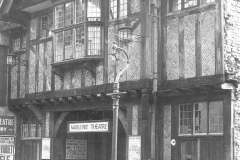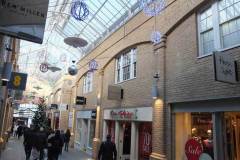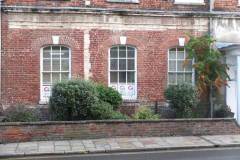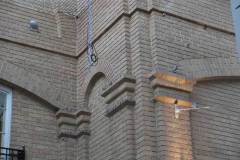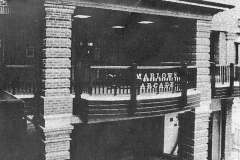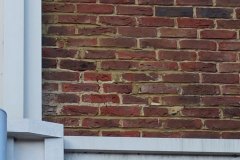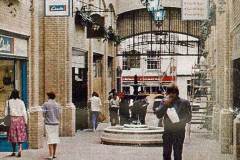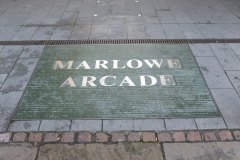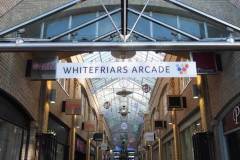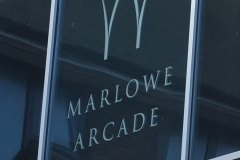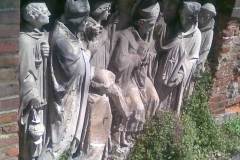Or is it Whitefriars Arcade?
The Marlowe Arcade was completed in 1985 – a commemorative plaque for the official opening by the Duchess of Kent can be seen high on the wall in the middle of the arcade (Image 1). It consists of a fully covered walkway of a dozen or so retail units, joining St Margaret’s Street to Rose Square in Whitefriars. It took its name from the Marlowe Theatre (Image 2) which was demolished to make way for the new arcade. The weather vane high above the St Margaret’s Street entrance (Image 3) provides a theatrical reminder of the lost building.
As originally conceived by the architects Ley Colbeck, the new space was to be based on:
- retail bays with high shallow arches (Image 4) which echo in style the windows of 16 Watling street, a nearby 17th century listed brick building (Image 5) – possibly the oldest brick home in the city
- a neo-Georgian style at the St Margaret’s Street end incorporating attractive non-standard shaped red bricks (known in the trade as ‘specials’) (Image 6)
- a ‘Victorian’ style at the Whitefriars’ entrance, making use of a portico and balustrades, both now lost (Image 7) – irregularities in the adjacent brick work (Image 8) provide the only vestiges of the portico
- a water feature in the middle of the arcade (Image 9) also now removed
- The arcade was renamed ‘Whitefriars’ Arcade’ in 2012, to integrate the area more effectively with the larger Whitefriars retail development which had been completed in September 2005. The arcade entrances at St Margaret’s Street (Images 10 and 11) and at Rose Square (Images 12 and 13) continue to show both names.
- The story of the Arcade is also linked to the fate of the mysterious ecclesiastical frieze which stood for many years in the nearby Rose Lane car park (Image 13). An offer for incorporation of the frieze into the new arcade was made but turned down. The frieze, probably of Caen stone and possibly depicting the consecration and enthronement of Thomas Becket, was reduced to rubble when a white van backed into it in December 2010, so it is now lost for ever.
Sources: Article Marlowe Centre Canterbury by Sutherland Lyall in Building Magazine 26 July 1985; for sources on Rose Lane car park frieze see separate page in this web site
DL

